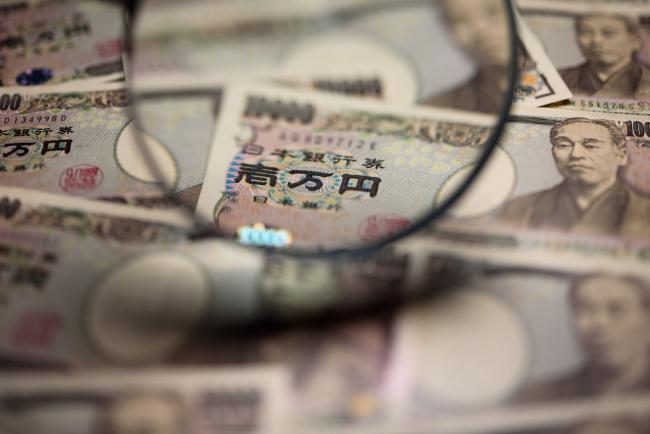(Bloomberg) -- The yen’s elevated volatility is spurring talk of intervention. But the Bank of Japan may be powerless to halt the currency’s rise.
Swings in the yen climbed to an 11-year high this week, suggesting that policy makers could have stepped in as the currency surged to the strongest since October 2016. The rapid advance may have unsettled Japanese authorities but market players think there’s little point in trying to stand in the way.
Options are pricing in a 49% chance that the currency will rally to 100 within three months. Unless it sells the yen, the Bank of Japan would be “almost powerless to stop this,” according to Pepperstone Group Ltd.
“The demand for put vol suggests traders still expect volatility to stay with us and promote the yen as our top safe haven currency,” said Chris Weston, head of research at Pepperstone Group in Melbourne. “The market does not see this as over by any means and movement is the base case.”
Japan’s currency climbed to 101.19 per dollar this week, the strongest since October 2016, as a slump in oil prices added to concerns over the global fallout from the coronavirus outbreak. A Ministry of Finance official said volatility in markets isn’t desirable and it’s necessary to continue watching the moves closely.
The Bank of Japan, which conducts intervention operations on behalf of the ministry, hasn’t been in the currency market since November 2011. In October that year, the yen appreciated to a record high of 75.35.
Selling the yen may draw the attention of the U.S. Treasury Department, which has already placed Japan on its currency watch list. Intervention should be reserved only for “very exceptional circumstances with appropriate prior consultations,” the department said in the report issued in January.
“Intervention appears difficult to implement unless the forex rate has moved to an extreme level,” Naohiko Baba, chief Japan economist at Goldman Sachs Group Inc (NYSE:GS)., wrote in a report Tuesday. “While the Japanese government may point to intervention as a check on highly volatile FX movements, it likely would not be an easy task to obtain agreement from the U.S. and other countries.”
